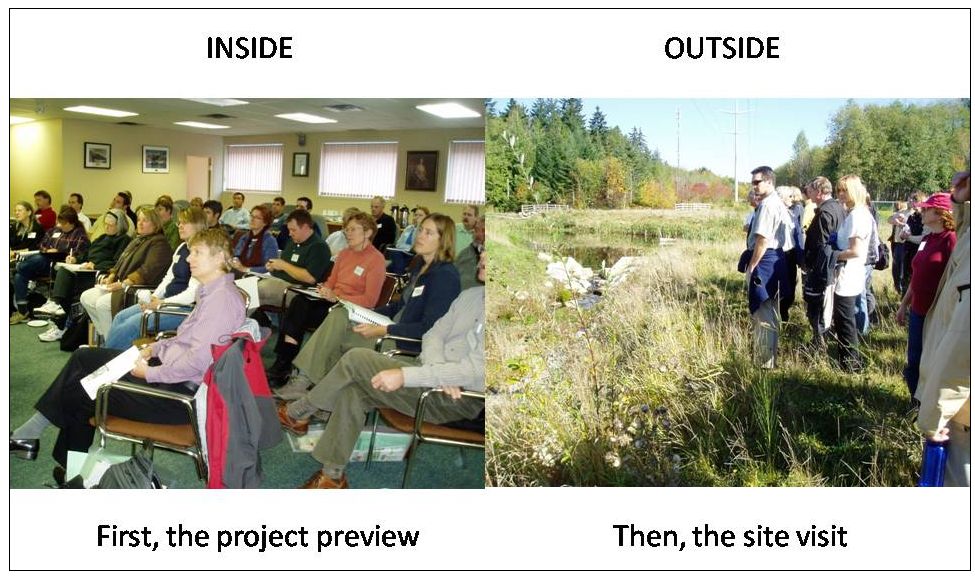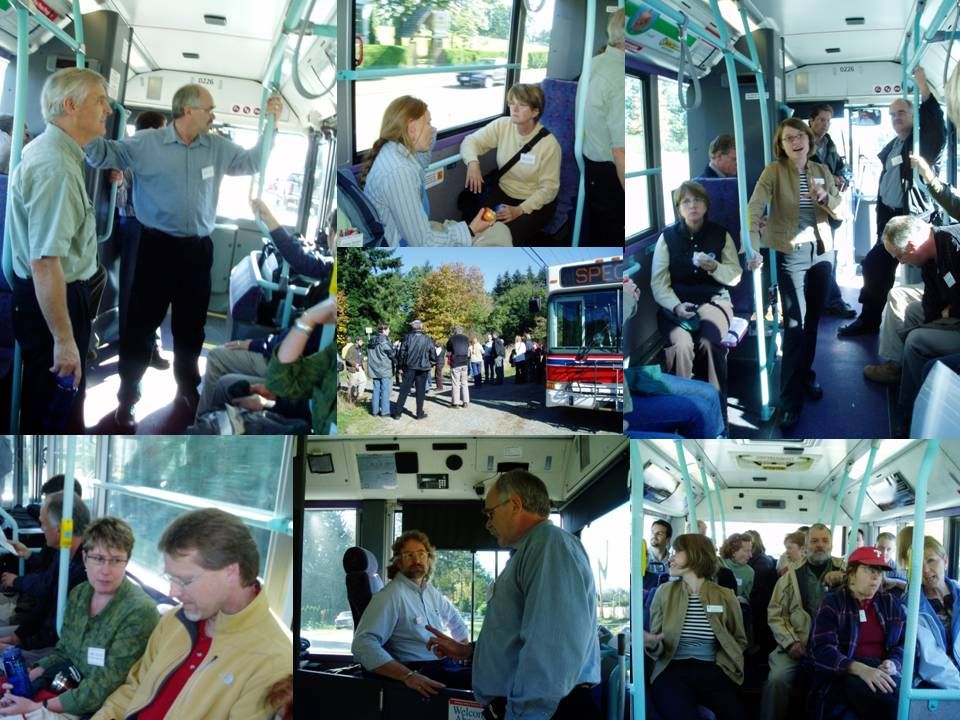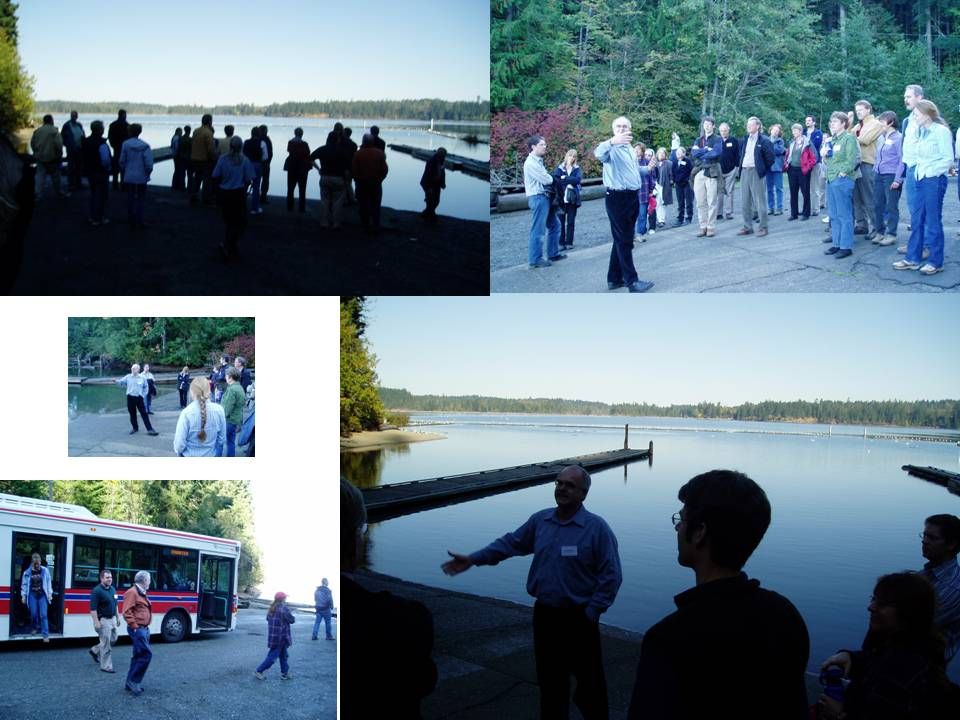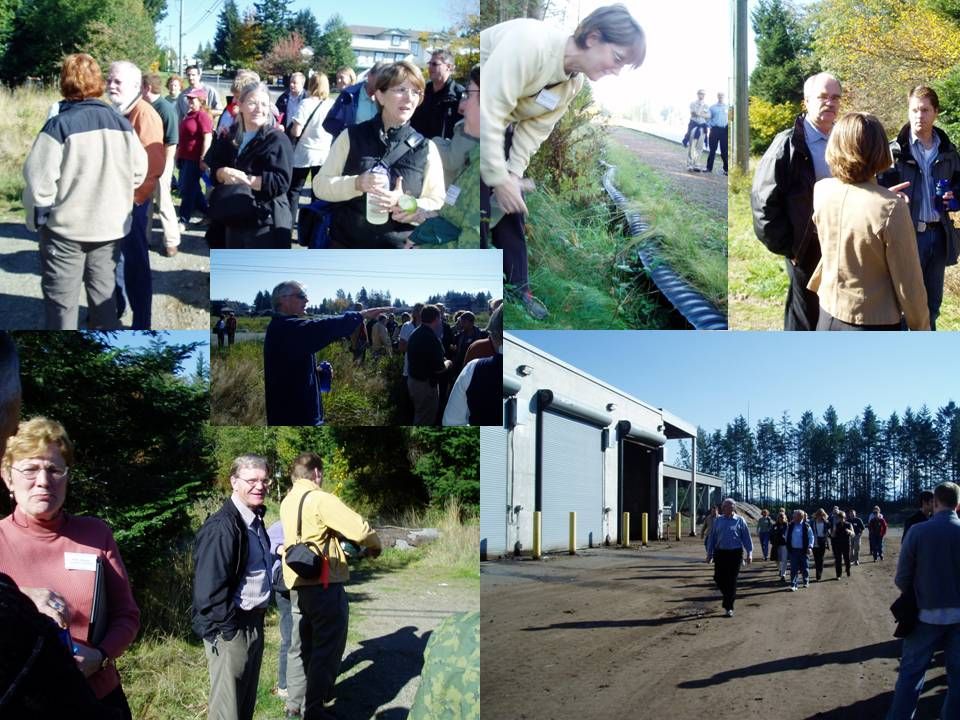SHARING ‘DESIGN WITH NATURE’ APPROACHES, TOOLS, EXPERIENCES AND LESSONS LEARNED:“Like most other areas on Vancouver Island, the Comox Valley is at a major cross-roads as to how we will develop and still maintain the natural beauty of our community,” stated Mayor Starr Winchester when Comox Valley local governments co-hosted the finale event of ‘Showcasing Green Infrastructure Innovation on Vancouver Island: The 2007 Series’
Note to Reader:
In 2007, the Partnership for Water Sustainability’s CAVI-Convening for Action on Vancouver Island program launched Showcasing Green Infrastructure Innovation on Vancouver Island: The 2007 Series. At the time, the projected growth of Vancouver Island and resulting cumulative impacts were drivers for reassessing where and how land is developed, and water is used. To promote a new way-of-thinking related to infrastructure policies and practices.
The goal in showcasing innovation and celebrating successes was to promote networking, build regional capacity, and move ‘from awareness to action’ – through sharing of green infrastructure approaches, tools, experiences and lessons learned as an outcome of designing with nature.

Convening for Action North of the Malahat
Three regional districts – Cowichan Valley, Nanaimo, and Comox Strathcona participated in the series. Events were held at two-week intervals during the mid- September through mid-October period.
 “In early 2007, we asked each regional district to partner with one or more of its member municipalities to co-host an event. We then announced the series at our Creating Our Future Workshop, held in June as a shoulder event to the Gaining Ground Summit Conference in Victoria,” recalls Kim Stephens, Partnership Executive Director.
“In early 2007, we asked each regional district to partner with one or more of its member municipalities to co-host an event. We then announced the series at our Creating Our Future Workshop, held in June as a shoulder event to the Gaining Ground Summit Conference in Victoria,” recalls Kim Stephens, Partnership Executive Director.
“A guiding principle for the series was that it often takes a third party to bring busy people together. Thus, the CAVI role was to facilitate networking and relationship-building among local governments on the east coast of Vancouver Island.
“It was evident that intra-region communication among local governments tends to be the exception rather than the rule. The CAVI objective was to turn the exception into the rule. And if communication was not happening within a region, it certainly was not happening between regions, or between valleys. This was our reality in undertaking a ground-breaking approach.
“Support for the Showcasing Innovation Series started at the top. The chair of each regional district made an opening statement at their event. Registration for each event was capped based on bus capacity – which was 50 for Cowichan and Nanaimo, and 40 for Comox Valley. In all three cases, the seats on the bus were quickly filled.
A Unique Format
“Each event comprised presentations in the morning and a tour of project sites in the afternoon. Each event was unique. The Showcasing Innovation Series created a sense of pride among the host local governments and enabled them to tell their stories in a way that no other forum could provide,” continues Kim Stephens.
“A Showcasing Innovation event was not a conference. Neither was it a workshop nor a seminar in the conventional sense. Rather, the purpose of the contextual presentations in the morning session was to whet the appetites of participants for the site tour that followed in the afternoon. The quality one-on-one conversations took place on the bus and when the group went for a walkabout.
To Learn More:
Download a copy of the Summary Report on Green Infrastructure Innovation on Vancouver Island: The 2007 Series

Showcasing Innovation in the Comox Valley
“The Comox Valley team chose Connecting to Sustainability as the theme for their showcasing day. The City of Courtenay and the Comox Strathcona Regional District showcased how they are making tangible progress on-the-ground through a philosophy that embodies the three Cs: communication, collaboration and cost-sharing,” states Kim Stephens.
“When we look at who registered, we are struck by the diversity of the audience. There were representatives from three regional districts, ten municipalities, the Clearbrook Waterworks District from the Fraser Valley, two provincial ministries, a number of private sector organizations, and several non-government organizations.
“We had a great mix of people and perspectives. We had a representative of the Association of Vancouver Island Coastal Communities, a number of senior managers in engineering and planning departments, on-the-ground practitioners, and community activists.”

Program Scope
The core program comprised a set of four case study presentations that described initiatives then underway in the Comox Valley:
 Case Study 1: Municipal Collaboration – Making it Happen – Local government collaboration is one of the keys to connecting to sustainability. In 2007, a key message was that efforts were being integrated and resources were being pooled. Graeme Faris and Kevin Lagan described on-the-ground benefits that result when local governments collaborate to integrate their efforts, and are guided by an holistic way-of-thinking and acting. They provided examples of how local governments in the Comox Valley are ‘connecting the dots’ to achieve integrated and sustainable outcomes.
Case Study 1: Municipal Collaboration – Making it Happen – Local government collaboration is one of the keys to connecting to sustainability. In 2007, a key message was that efforts were being integrated and resources were being pooled. Graeme Faris and Kevin Lagan described on-the-ground benefits that result when local governments collaborate to integrate their efforts, and are guided by an holistic way-of-thinking and acting. They provided examples of how local governments in the Comox Valley are ‘connecting the dots’ to achieve integrated and sustainable outcomes. Case Study 2: Comox Lake Watershed Assessment – from Awareness to Action – Comox Lake is an unprotected watershed. In 2007, an action plan was under development to address risk as a function of likelihood of occurrence, consequence if something happens, and vulnerability. Graeme Faris and Ron Neufeld described the steps in the process for completing the first Watershed Assessment to be undertaken in British Columbia in accordance with new drinking water source to tap guidelines.
Case Study 2: Comox Lake Watershed Assessment – from Awareness to Action – Comox Lake is an unprotected watershed. In 2007, an action plan was under development to address risk as a function of likelihood of occurrence, consequence if something happens, and vulnerability. Graeme Faris and Ron Neufeld described the steps in the process for completing the first Watershed Assessment to be undertaken in British Columbia in accordance with new drinking water source to tap guidelines. Case Study 3: Innovation in the Comox Valley: first Wal-Mart, then Home Depot – Big box development was the trigger for major changes in land development practices. In particular, rainfall capture was standard practice in the City as of 2007. Kevin Lagan described how Wal-Mart established the precedent for rainwater runoff capture in the City of Courtenay. The Home Depot development then went beyond the Wal-Mart experience when it established a British Columbia precedent for deep-well injection of runoff for groundwater aquifer recharge.
Case Study 3: Innovation in the Comox Valley: first Wal-Mart, then Home Depot – Big box development was the trigger for major changes in land development practices. In particular, rainfall capture was standard practice in the City as of 2007. Kevin Lagan described how Wal-Mart established the precedent for rainwater runoff capture in the City of Courtenay. The Home Depot development then went beyond the Wal-Mart experience when it established a British Columbia precedent for deep-well injection of runoff for groundwater aquifer recharge. Case Study 4: Absorbent Soils For Rainwater Management and Achieving Compliance To Meet Green Infrastructure Goals – Courtenay was the first BC municipality to require that a minimum soil depth be retained on building sites. Enforcement is the operational challenge. The City’s Sandy Pridmore explained the Official Community Plan states that a minimum depth of 300mm of topsoil or amended organic soil will be provided on all landscaped areas. Soil depth is a requirement in all new subdivisions.
Case Study 4: Absorbent Soils For Rainwater Management and Achieving Compliance To Meet Green Infrastructure Goals – Courtenay was the first BC municipality to require that a minimum soil depth be retained on building sites. Enforcement is the operational challenge. The City’s Sandy Pridmore explained the Official Community Plan states that a minimum depth of 300mm of topsoil or amended organic soil will be provided on all landscaped areas. Soil depth is a requirement in all new subdivisions.
At a Cross-Roads
When she opened the event, Courtenay Mayor Starr Winchester referred to Premier Gordon Campbell’s call for action at the 2007 annual conference of the Union of BC Municipalities. “Local government leaders are telling our staffs that we want to be a sustainable community tomorrow.
 “We are not being so unrealistic as to ask for this yesterday,” she added with a twinkle in her eye.
“We are not being so unrealistic as to ask for this yesterday,” she added with a twinkle in her eye.
“Like most other areas on Vancouver Island, the Comox Valley is at a major cross-roads as to how we will develop and still maintain the natural beauty of our community. This is a real challenge.
“We want to keep our rural areas rural, yet we are faced with many people coming into the valley, especially now that we have an international airport.
“We are experiencing phenomenal growth. So we are really depending on the practitioners to keep us grounded and realistic so that growth will be sustainable.
Mayor Winchester concluded by referring to the position of her Council on sustainability: “Two years ago we made a resolution to raise the bar, and that’s why you are here today…to help us further raise the bar so that we can ensure a sustainable future for the Comox Valley.”




